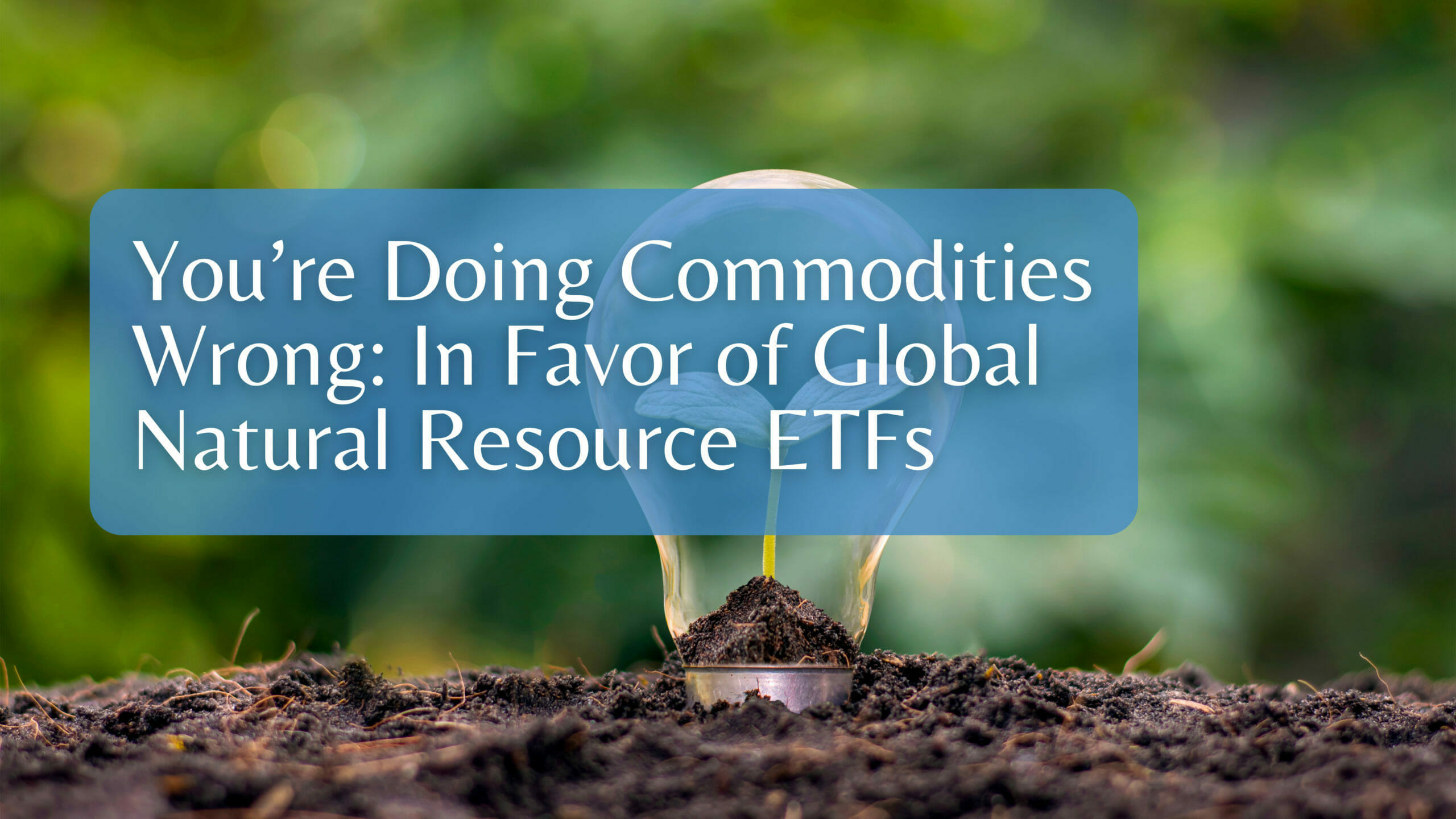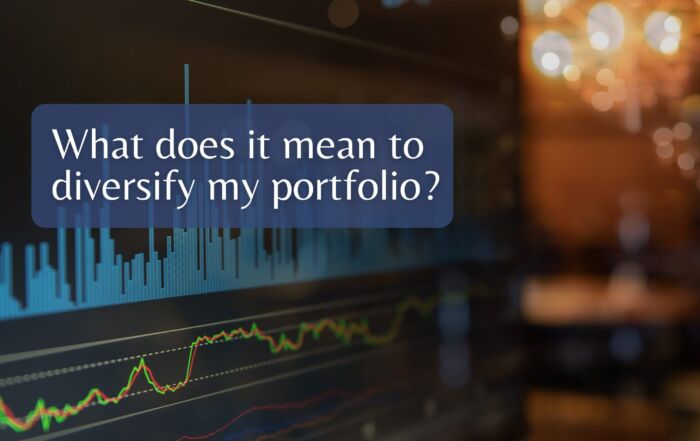
You’re Doing Commodities Wrong: In Favor of Global Natural Resource ETFs
Before exchange traded funds (ETFs), investing in commodities meant either opening up an account to trade futures contracts or holding physical natural resources like gold and oil. Now, with assets in global ETFs recently passing the $4 trillion benchmark, it has never been easier for retail investors to gain access to broad commodities exposure at a very low cost through global natural resource funds. This is especially beneficial for investors seeking new opportunities to diversify their portfolios since the equity market rally that has taken place over the last 8 months has left most stock values significantly higher than historic averages.
The Futures Approach Has Many Disadvantages
While there are ETFs that can give you pure exposure to the commodities market through futures contracts, they come with many disadvantages such as lack of dividends, increased volatility, large expense ratios, and the potential for contango. Contango refers to a situation where the future spot price is below the current price, and people are willing to pay more for a commodity at some point in the future than the actual expected price of the commodity. Contango can have negative effects on a portfolio, eating into returns and potentially generating losses for investors.
These problems not only hold true for those who use futures-based ETFs but also for those who use actual futures as their commodity exposure. Global natural resource ETFs avoid these risks by holding the stocks of commodity-related companies such as Exxon Mobil (XOM), Monsanto (MON), and Newmont Mining (NEM) instead of futures contracts. As the prices of the commodities these natural resource companies sell/produce go up, they become more profitable, which also makes them a good hedge against inflation.
Historically, stocks that are linked to the production of commodities behave differently than, and in some cases even have an inverse relationship with, the rest of the equity market. This is why commodity-related industries (like energy and mining) have recently underperformed relative to the rest of the stock market which has been setting record highs over the last few months. Therefore, if you are like many other investors who are worried about the sky-high valuations in the market currently, then these undervalued global natural resources ETF may give you the buy-low sell high strategy you’ve been looking for.
Available Global Natural Resource ETFs
There are currently five global natural resource ETFs traded on the NYSE. We screened out funds with less than $100 million AUM. Thus, the focus of our comparison will be on the three largest global natural resource ETFs currently available:
- Flexshares Morningstar Global Upstream Natural Resources (GUNR)
- SPDR® S&P® Global Natural Resources ETF (GNR)
- IQ® Global Resources ETF (GRES)
ETF Methodology
The most important research into any ETF is knowing the methodology of the index that the fund tracks. The methodology will explain the fund’s performance, turnover, and allocation. Below is a summary of the index for each fund.
- Flexshares Morningstar Global Upstream Natural Resources (GUNR) tracks the Morningstar® Global Upstream Natural Resources Index SM which attempts to provide exposure to companies that have significant business operations in the ownership, management or production of natural resources in energy, agriculture, precious or industrial metals, timber, and water resources categories. The index includes 120 of the largest publicly-traded companies in the commodities sector (Energy-30, Metals-30, Agriculture-30, Timber-15, Water-15).
- The IQ® Global Resources ETF (GRES) tracks the IQ Global Resources Index which uses momentum and valuation factors to identify global companies that operate in commodity-specific market segments and whose equity securities trade in developed markets, including the U.S. These segments include the major commodity sectors (Precious Metals, Industrial Metals, Livestock, Energy, and Grains, Food & Fiber), plus Timber, Water and Coal. The Index also includes short exposure to global equities as a partial equity market hedge.
- SPDR® S&P® Global Natural Resources ETF (GNR) tracks the S&P Global Natural Resources Index which includes 90 of the largest publicly-traded companies in natural resources and commodities businesses that meet specific investability requirements, offering investors diversified and investable equity exposure across three primary commodity-related sectors/sub-indices: agribusiness, energy, and metals & mining. The 30 largest companies ranked by total market capitalization within each cluster form each sub-index. Index weights are calculated using float adjusted market capitalization.
At first glance, it seems like the three funds provide similar exposure and are not significantly different from each other. A deeper analysis will show that each of these ETFs provides unique benefits that should be carefully considered when making your investment decision.
Which ETF Should I Choose?
A variety of different metrics can be used to evaluate ETFs. Some of the most popular include liquidity, expenses, yield, holdings/exposure and performance. All data collected for comparing these metrics comes from both ETF.com and Morningstar Office as of 7/15/2017.
Liquidity: GUNR
- In terms of liquidity, GUNR provides the highest average daily share volume by a large margin (786,199 vs. the next highest GNR at 136,893). It also offers the lowest average bid-ask spread at 0.03%.
Expenses: GNR
- GNR offers the cheapest product with an expense ratio of 0.40%. However, it should be noted that GNR has the smallest ETF basket with only 90 total commodity-related stocks in its holdings.
Yield: GNR
- Not only does GNR offer the lowest expense ratio but it also yields the highest dividend with a 12 month trailing dividend yield of 2.25%. The next highest yield is GUNR with 92%.
Commodity Exposure: GRES
- Although GRES has the highest expense ratio and lowest dividend yield of the group, it holds a 20% short position in the equity market in order to hedge its equity exposure. This makes GRES more of a pure commodities play than the other global natural resource ETFs. This helps minimize volatility and provides additional diversification benefits. It also holds the most commodity-related stocks with 144 holdings.
Performance: GNR
- The figure below shows the trailing returns for all three funds over the YTD, one year, three year and five year periods.
| Symbol | Past Rate of Return (%) | |||
| YTD | 1 Year | 3 Year | 5 Year | |
| GRES | 2.47 | -1.11 | -3.03 | 0.69 |
| GUNR | 3.27 | 8.69 | -4.57 | 0.46 |
| GNR | 5.51 | 12.38 | -3.94 | 0.90 |
*This data was collected using Morningstar Office as of 7/15/2017
- In addition to past returns, the Sharpe ratio (risk-adjusted return) for each fund over the YTD, one year, three year, and five year periods can be used to measure performance. The higher the Sharpe ratio the stronger the performance relative to risk. This will be a better gage of overall performance because it includes the volatility of the fund in its calculation as opposed to just evaluating their raw returns.
| Symbol | Sharpe Ratio | |||
| YTD | 1 Year | 3 Year | 5 Year | |
| GRES | 0.39 | -0.32 | -0.28 | 0.10 |
| GUNR | 0.08 | 0.61 | -0.30 | 0.07 |
| GNR | 0.41 | 0.90 | -0.27 | 0.11 |
*This data was collected using Morningstar Office as of 7/15/2017
- Per the tables above, GNR appears to be the strongest performer with the highest Sharpe ratio and past rate of return in both up and down years.
Strength of Each ETF
The figure below shows the different metrics used in this article to measure the strength of each ETF. The best performer in each category is indicated with a checkmark in the winning fund’s respective box.
| Symbol | Liquidity | Yield | Expenses | Exposure | Performance |
| GRES | ✔ | ||||
| GUNR | ✔ | ||||
| GNR | ✔ | ✔ | ✔ |
These global natural resource ETFs each provide their own unique benefits for investors. A portfolio that rebalances frequently or has high turnover would be best suited with GUNR because of its high level of liquidity and low bid-ask spread. A strategy that attempts to limit risk and exposure to the equity market while also maximizing the number of commodity related holdings in the fund would see GRES as their best option. Investors looking for a more well-rounded, long-term option with strong performance, low costs, and a high yield should use GNR as their global natural resource fund of choice.
Index Methodology Links:
The links below will take you to the methodology/construction rules for the index that each global natural resource ETF tracks.
GUNR:
GRES:
- http://www.nylinvestments.com/public_files/iqetfs/pdf/methodology/iqgres-iiqglobalresourcesindex.pdf
GNR:
- http://us.spindices.com/documents/methodologies/methodology-sp-thematic-indices.pdf
By: Quentin McTeer, Research Analyst Intern
Click here to schedule a consultation with one of our financial planners.
Listen to Our Podcast:
Download our free guide: “Your Pre-Retirement Checklist”
Have more questions? Contact Us
Share This Story, Choose Your Platform!
Wiser Wealth Management, Inc (“Wiser Wealth”) is a registered investment adviser with the U.S. Securities and Exchange Commission (SEC). As a registered investment adviser, Wiser Wealth and its employees are subject to various rules, filings, and requirements. You can visit the SEC’s website here to obtain further information on our firm or investment adviser’s registration.
Wiser Wealth’s website provides general information regarding our business along with access to additional investment related information, various financial calculators, and external / third party links. Material presented on this website is believed to be from reliable sources and is meant for informational purposes only. Wiser Wealth does not endorse or accept responsibility for the content of any third-party website and is not affiliated with any third-party website or social media page. Wiser Wealth does not expressly or implicitly adopt or endorse any of the expressions, opinions or content posted by third party websites or on social media pages. While Wiser Wealth uses reasonable efforts to obtain information from sources it believes to be reliable, we make no representation that the information or opinions contained in our publications are accurate, reliable, or complete.
To the extent that you utilize any financial calculators or links in our website, you acknowledge and understand that the information provided to you should not be construed as personal investment advice from Wiser Wealth or any of its investment professionals. Advice provided by Wiser Wealth is given only within the context of our contractual agreement with the client. Wiser Wealth does not offer legal, accounting or tax advice. Consult your own attorney, accountant, and other professionals for these services.





